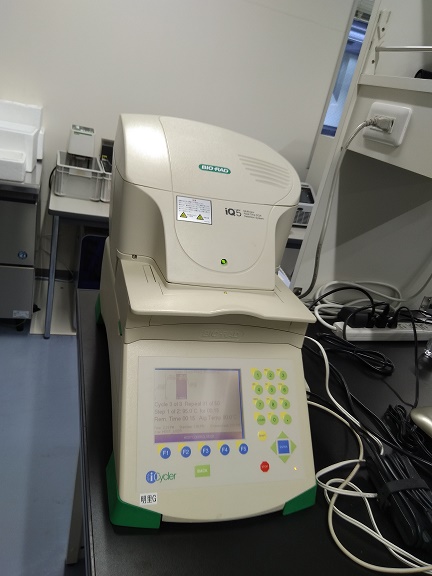Thermocycler or thermal cycler is a piece of equipment is used for the copying or amplification of specific sequences of nucleotides through a controlled timing and temperature regulation. It is an important tool in the molecular biology laboratory.
Thermocycler allows reaction mixtures in specialized tubes known as Eppendorf tubes (PCR tubes) to be heated and cooled at varying times and temperatures. It is generally used to achieve a controlled denaturation, renaturation and elongation of nucleotide or gene sequences of unknown or known organisms.
Thermocycler can also be called PCR machine because it is used to achieve polymerase chain reaction (PCR), a reaction that allows molecular biologists to amplify the nucleotide sequences that make up a given gene or DNA.
PCR is a routine technique in the molecular biology laboratory, and it is achieved with the help of the thermal cycler (Figure 1) aside other reagents and materials used in the PCR reaction. The thermocycler is programmed to work at specified time and temperature range.

MAINTENANCE/CARE OF THE THERMOCYCLER
- Always follow and read the owner’s manual before operating the thermocycler.
- Thermocycler must be kept in clean areas of the laboratory to avoid contamination of the reaction process by extraneous DNA from the environment or from the equipment.
- The equipment should be unplugged from the power source when not in use.
- Thermocycler is expensive, and it should be handled with utmost care to avoid damage.
REFERENCES
Cheesbrough, M (2006). District Laboratory Practice in Tropical countries Part I Cambridge
Chung K.T, Stevens Jr., S.E and Ferris D.H (1995). A chronology of events and pioneers of microbiology. SIM News, 45(1):3–13.
Dictionary of Microbiology and Molecular Biology, 3rd Edition. Paul Singleton and Diana Sainsbury. 2006, John Wiley & Sons Ltd. Canada.
Goldman E and Green L.H (2008). Practical Handbook of Microbiology, Second Edition. CRC Press, Taylor and Francis Group, USA.
Madigan M.T., Martinko J.M., Dunlap P.V and Clark D.P (2009). Brock Biology of microorganisms. 12th edition. Pearson Benjamin Cummings Publishers. USA.
Nester E.W, Anderson D.G, Roberts C.E and Nester M.T (2009). Microbiology: A Human Perspective. Sixth edition. McGraw-Hill Companies, Inc, New York, USA.
Prescott L.M., Harley J.P and Klein D.A (2005). Microbiology. 6th ed. McGraw Hill Publishers, USA.
Willey J.M, Sherwood L.M and Woolverton C.J (2008). Harley and Klein’s Microbiology. 7th ed. McGraw-Hill Higher Education, USA.
Discover more from #1 Microbiology Resource Hub
Subscribe to get the latest posts to your email.


